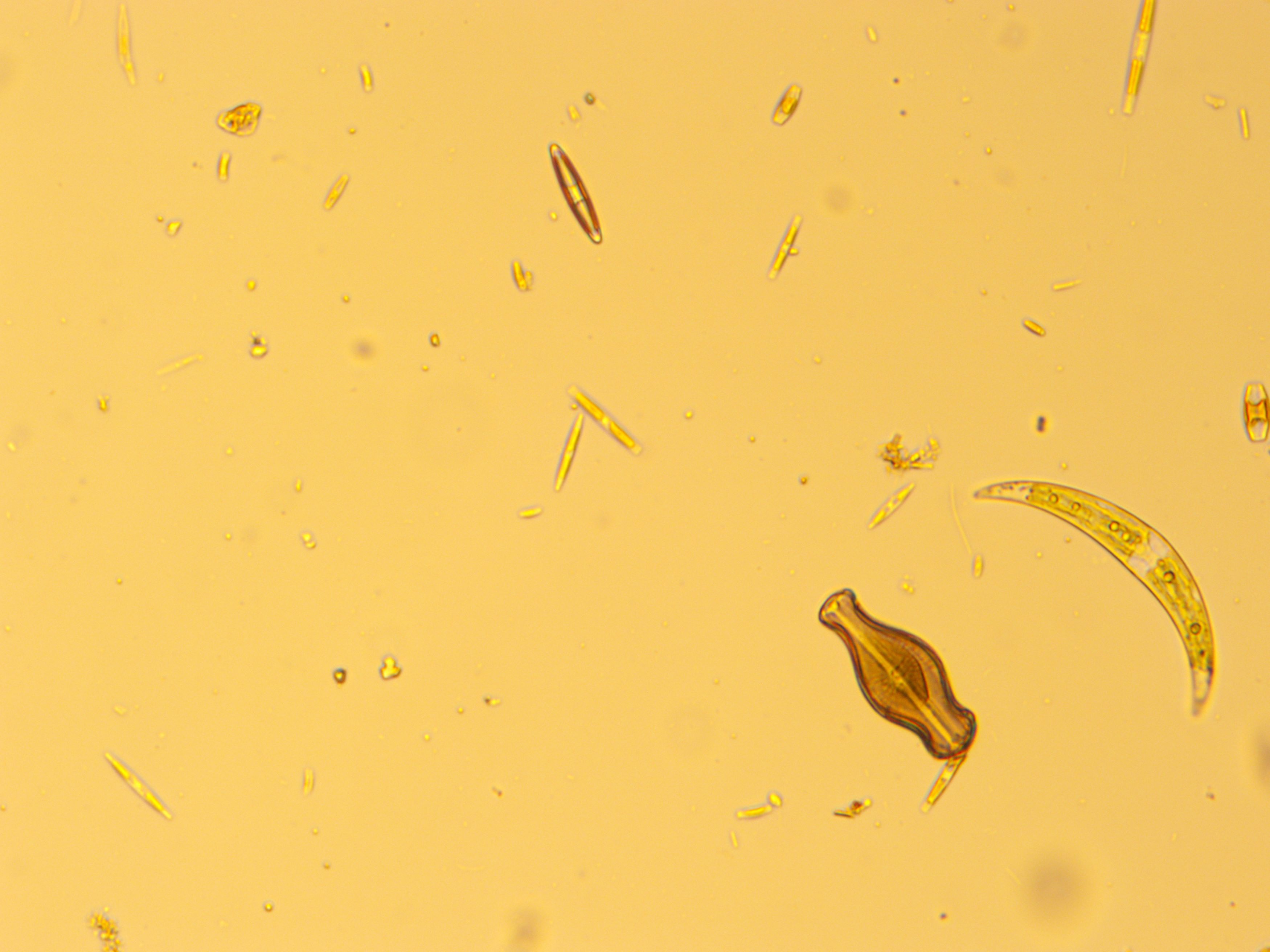Didymo cells have been found in algae samples taken from submerged rocks and debris at two boating access sites on the Au Sable River north of Luzerne in Oscoda County, Michigan.
Sampling conducted by Michigan Trout Unlimited in late April found several didymo cells at the Parmalee Canoe Launch off North Red Oak Road and one cell just downstream at the Whirlpool access off West Cherry Creek Road.
No evidence of didymo was found in samples taken upstream at the McMasters Bridge Road access, further downstream or in a number of tributaries sampled to date.
Didymo, also known as “rock snot,” is a microscopic diatom (single-celled alga) that thrives in cold, low-nutrient streams generally considered pristine. Under the right conditions, cells can form extensive stalks, or blooms, creating dense mats that cover the stream bed and reduce habitat for macroinvertebrates including mayfly, caddisfly and stonefly nymphs, which are crucial food sources for fish.
Though no blooms have been observed at either of the two Au Sable River access sites, Michigan Trout Unlimited is joining the Michigan departments of Natural Resources and Environment, Great Lakes, and Energy to urge anglers and all stream users to properly clean waders, boats and equipment between every site visit.
“With trout season now open across the state and paddle sports gearing up for the summer, it’s important to remind everyone enjoying Michigan’s streams and rivers to take steps to decontaminate to prevent further spread of didymo and aquatic invasive species,” said Bryan Burroughs, executive director of Michigan Trout Unlimited.
Didymo is believed to be native to at least parts of the Great Lakes basin; however, its exact native range is unknown. Blooms are recent phenomena first observed in Michigan waters in 2015 in the St. Marys River and then in the Manistee and Boardman rivers in 2021 and 2022, respectively.
Scientists are still researching the causes of blooms. Didymo blooms appear to be sporadic and do not persist throughout the entire year or every fishing season, but there is also no known treatment for didymo.


